The value of trade secrets
31 May 2021
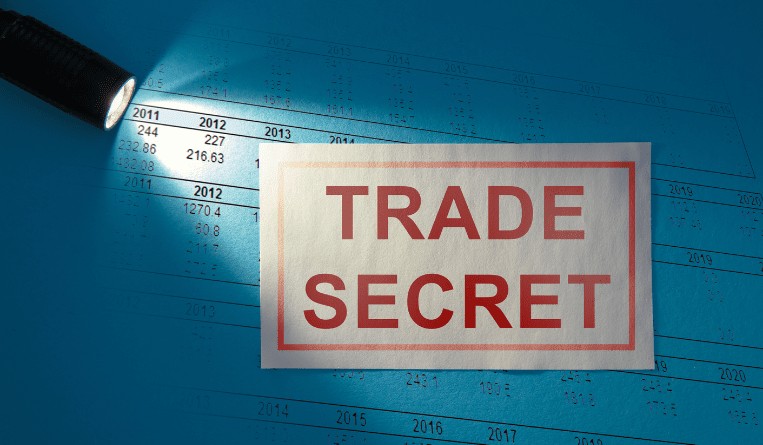
Many companies are unaware that a single new production technique or formulation results in a trade secret that can be protected. Excel V. Dyquiangco looks into some of the common mistakes made by manufacturers when it comes to protecting their trade secrets.
Many companies are unaware that a single new production technique or formulation results in a trade secret that can be protected. They either do not know they have valuable trade secrets, or they don’t inform staff that have access or handle trade secrets about the value and importance of confidentiality.
“This is the main reason mistakes are made,” says Anton Blijlevens, principal at AJ Park in Auckland. “An appropriate level of control and security does not exist and mistakes get made, information is unwittingly disclosed or made public such as online.”
He adds: “When mistakes are made, competitors have an opportunity to capitalize on the availability of the trade information. I call it ‘trade information’ as it is no longer ‘trade secret information’ at this stage. Whether competitors realize the information is available is another thing, but vigilant competitors will smell it, take it and use it.”
One of the main problems for vulnerable companies is that they will have no idea that information has been seen and is being used by a competitor, Blijlevens says. “Unlike tangible assets that get stolen by physical removal, trade secrets are not physically removed. Their theft occurs by a competitor merely looking at the information. How do you know who has looked? My car can’t be stolen by a passer-by merely looking at my car, but they can see and then copy my prototype spoiler design by just looking at it.”
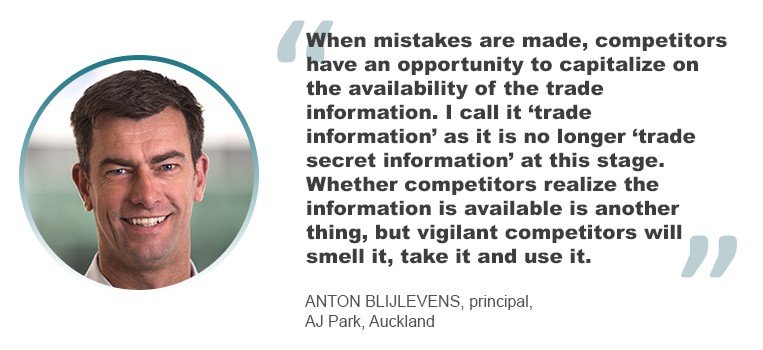
Samuel Yuen, managing director at Yuen Law in Singapore, adds that sometimes companies decide whether the information is even worth the protection as a trade secret.
“While trade secrets are in theory protected in perpetuity, they are valuable only so long as they are confidential,” he says. “Products that can be easily reverse-engineered may be more suited for patent protection (where the product details are disclosed publicly but protection is guaranteed for 20 years). Companies seeking to raise revenue through licensing of the product, for example, may also want to consider patent protection instead so that they are the sole supplier and licensor of the product for that protected period.”
So how valuable are these trade secrets?
Workers and training
Su Myat Htun, senior associate at Yuen Law in Singapore,says that one problem companies face in trade secrets is focusing on external parties only.
“Clients often come to us to draft non-disclosure agreements when dealing with third parties,” she says. “While such agreements are no doubt important, the parties handling the trade secret are most often your own employees. It is just as important, if not more, to ensure your own employees are subject to strict standards of confidentiality. Once a leak occurs, the mistake is irreversible.”
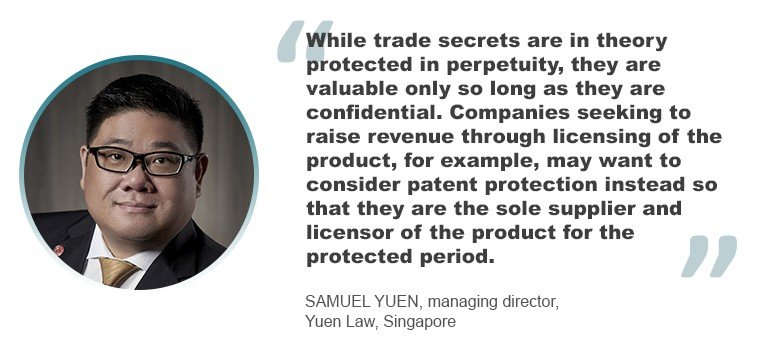
On the flip side, it is also about failing to manage departing employees.
“Employees who have had access to trade secrets should be given special attention when they leave employment,” she says. “The exact measures that can be taken will differ depending on the context. Examples include exit interview and inventory checks, subjecting the employee to garden leave or non-competition obligations for a certain period (during which the trade secret may become obsolete, if applicable), or monitoring email and computer use for unauthorized downloads.”
This is echoed by Blijlevens, who says that not using non-disclosure agreements (NDAs) with others outside the business can be dangerous, especially when disclosing new ideas or information to people outside the business.
“NDAs are also important to use when you’re receiving confidential information from others, because they clearly outline your obligations and theirs,” he says. “Without a written agreement, you may find yourself in a tricky ‘we said, they said’ situation with obligations that go way beyond those of a typical NDA. Use of an NDA can also help demonstrate that disclosures made were not public disclosures and should hence be excluded as prior art citable against a patent application yet to be filed.”
However, it’s also important to understand why some companies refuse to sign NDAs.
“I have helped a number of clients that were wanting to license their IP to large global operations such as Philips, the U.S. Navy, Huawei, Stanley Black & Decker and more,” he says. “[Operations like those] generally do not sign NDAs with outside companies wanting to licence or sell IP to them. This approach protects them against legal claims of breach of confidentiality in case someone internally somewhere in the world happens to be developing the same idea. Often such global businesses are willing to receive external technology ideas, but most have insisted that my clients first file a patent application as a way for my clients to protect their IP position.”
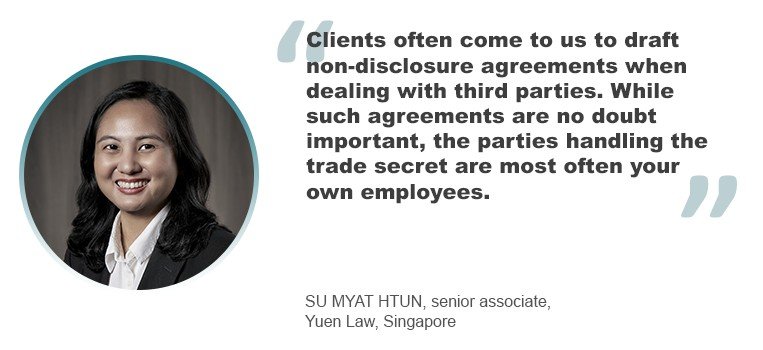
Policies and enforcing framework
“Companies should always have a trade secret protection framework which supports its business policies and practices,” says Bee Yi Lim, a partner at Tay & Partners in Kuala Lumpur. “The trade secret protection framework, which includes immediate back-up plans upon exposure of trade secrets, should be fluid and updated from time to time to cater to potential threats. Companies can also invest in employee and service suppliers and vendor training so that they have trade secret awareness, particularly regarding their confidentiality duty, do not mishandle trade secrets and can assist to take steps to minimize risks of disclosure or misuse. The losses resulting from trade secret theft could be irreparable and can affect a company for a significant period of time. Hence, it should not be underestimated.”
Yuen agrees. He says it is best to consider carefully the intention to exploit products and services as soon as they start.
“This will inform your decisions on how best to protect your intellectual property, be it protecting it as a trade secret, apply for patent protection or something else entirely,” he says. “If you want to protect information’s confidentiality, allocate resources to drafting the appropriate non-disclosure agreements for people who will be handling the information. Your employment agreements and handbooks should also set out stringent confidentiality terms and policies. Beyond just paper terms, it is important that companies actually allocate time to ensure that they have actual processes in place that employees can follow to help maintain the confidentiality of their trade secrets.”
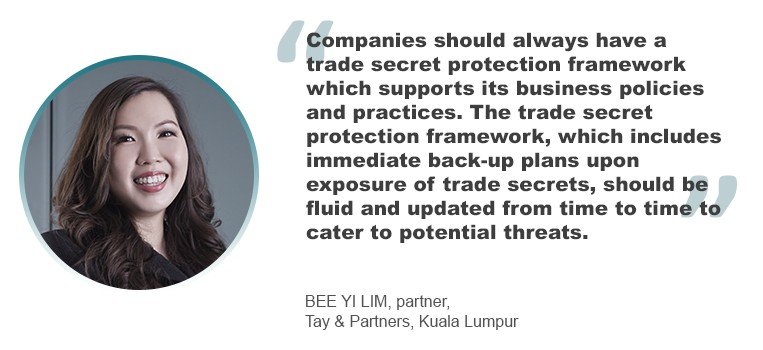
______________________________________________________________________________________________________
Five trade secret mistakes companies can avoid
Bee Yi Lim, a partner at Tay & Partners in Kuala Lumpur, outlines five mistakes in trade secrets that companies should avoid, and how to resolve these.
- Taking in another company’s trade secret through the recruitment of new employees especially when hiring from a competitor. Trade secrets may be misappropriated via this manner, so it is important to have in place the relevant safeguards including exit interviews to underline the importance of confidentiality.
- Hindering accessibility to trade secrets which employees need through unnecessary layers of bureaucratic red tape. If the employees perceive the trade secret protection policies as being there to assist them rather than to hinder them, they are more likely to adhere to the policies. The policies that are implemented should ideally be ones that are necessary and can be followed.
- Equating all trade secrets as the same. Trade secrets have varying degrees of value and importance depending on the changes to the business. A company’s trade secrets should be ranked and managed accordingly so that higher protection is accorded to high importance trade secrets and those that are no longer of economic value may be de-classified.
- Failing to enforce its trade secret protection framework. Active enforcement and management can help to mitigate risks. Action should be taken if there are breaches of the framework to underline the importance of adhering to the policies.
- Thrifting on physical and electronic security. A weak physical and electronic security system makes it easier for trade secret theft. Companies can update their security system and identify weak areas to try to minimize trade secret thefts.






